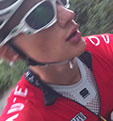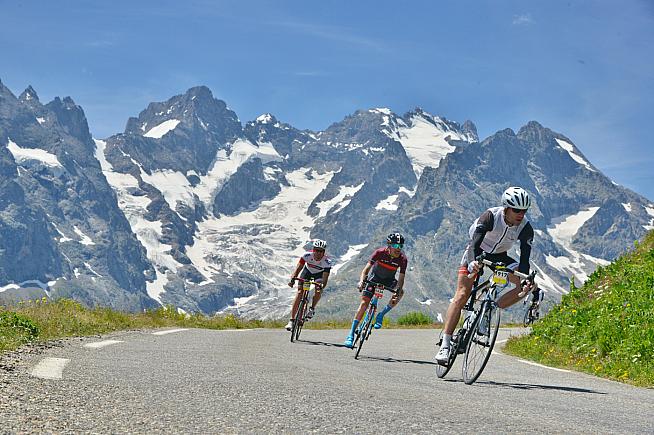La Marmotte. With a 173km parcours sending you over four mountain passes to rack up over 5000m of climbing, it's not for the faint of heart.
I rode it in 2018 having had my first crack in 2016. With many gran fondos and multiple Haute Routes in my legs, I felt I knew what I was doing and knew how to manage myself on a tough day.
However, it seems that two years - the time since my first effort at La Marmotte - was enough to make me forget just how hard this ride is. Here's why....
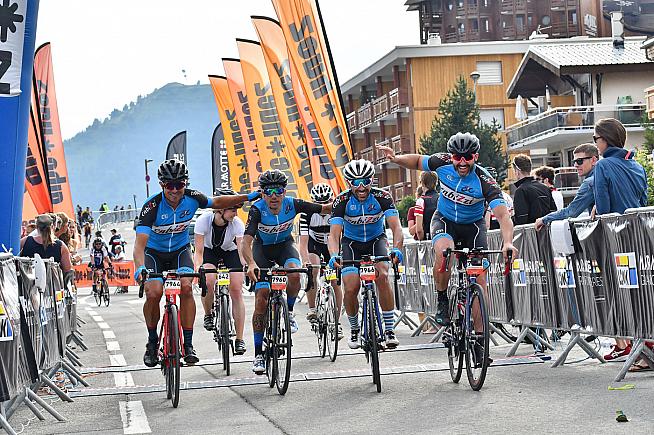
The alarm call
First things first, and the first obstacle of the day. The alarm call. If you're in one of the front pens, such as I was, you need to be in your pen by about 6.30-40am, to wait in what feels like a pen of cattle about to be sent to the abbatoir, waiting for the 7am start. Furthermore, a lot of the peloton, including me, stay at the top of Alpe D'Huez. However, the event starts at the bottom of the Alpe, in Bourg.
Before that mountaintop departure, you need to wake up, eat as much breakfast as you can, drink as much caffeinated products as you can, and hopefully allow time for you body to return itself to race weight, if you know what I mean.
You can do the math, but for reference, I left the hotel at 6am. The alarm went off at 3:45am.
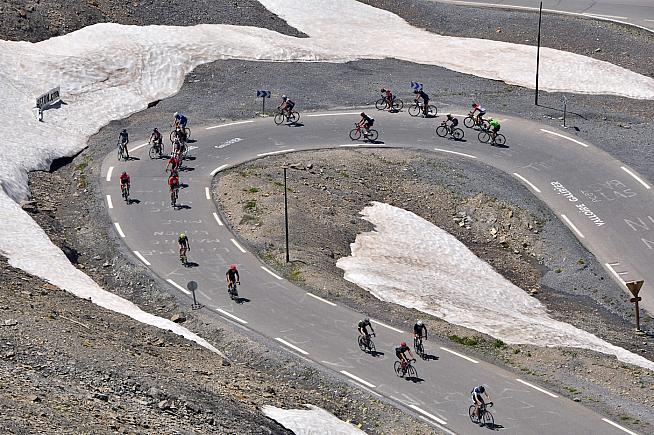
The race to the bottom
It's a gran fondo, therefore it's almost obligatory for the start to be unnecessarily hard and fast. Before the climbing starts on the Glandon, you've got a race to the base of it - 15km of the two thousand riders in my early departing pens forming into pelotons, performing suicide manoeuvres to bridge between bunches, and general other assorted mayhem. Fortunately, it's a very un-technical run in, with few roundabouts and road furniture, making it relatively safe. But, on cold legs that have been standing about for the last 30 minutes, it hurts.
You'll probably burn a match here, whether you want to or not. And, in the grand scheme of the event, holding onto those wheels to save 30 seconds or so is all so futile. But, when overcome by Gran Fondo Frenzy, you cannot help yourself.
Lady luck has you at her whim
A large part of the day is the overlooked parts; the schlep through the Maurienne valley to the base of the Telegraphe, and the grinding, 'pedally', descent off the Col du Lautaret.
In both of these sections, you need to hope you find yourself with a strong and committed bunch. You need to be there with a cohort of wingmen to work together with and lean on, to share the load whilst keeping the pace high, yet not blowing any of your valuable stash of bullets.
Huge time gains or huge energy losses can be made in both situations, and in my case, I certainly burnt through more watts on the ugly grind up the Maurienne valley than I'd have liked. Caught in a group who seemed scared to put their nose in the wind, I foolishly took more than my share of turns dragging the useless rabble through the flatlands, and regretted it the minute I arrived at the Telegraphe. For me, this was the first nail in a coffin I was building for myself.
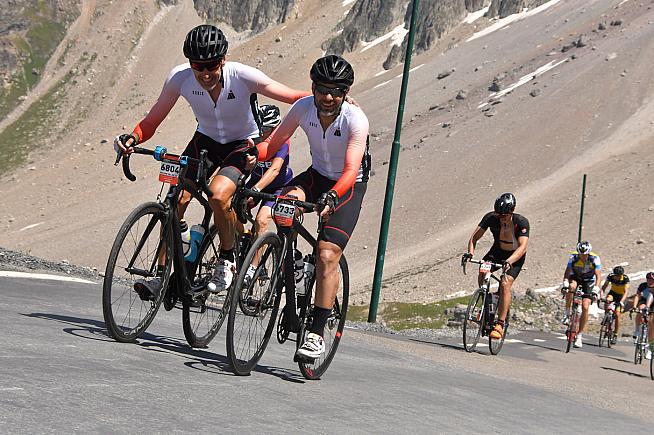
The Telegraphe, the secret assassin
Ask a rider what they're most anxious about prior to the Marmotte, and I bet you less than 1% will say the Telegraphe.
When you look on the elevation profile of the route, the three other mountain behemoths - the Glandon, Galibier, and Alpe D'Huez - stand tallest, and remain forefront in your mind.
However, nestled in there is the 12km of 7% gradient that is the Telegraphe. That's a serious climb; on any other day, you'd tackle it with respect. On the Marmotte, you write it off, and don't give it the caution it deserves.
In itself, it's benevolent climb; steady and not too steep. However, it draws you in to riding too hard, and the descent into Valloire, the town where the Galibier starts, is cruel in its brevity. My ride file suggests I got less than 8 minutes of descent between cresting the Telegraphe and starting the beast that is the Galibier. Eight minutes ain't much energy bar and 'get your shit together' time.
After my over-enthusiasm through the Maurienne valley, those 12km of the Telegraphe marked the second nail into my coffin.
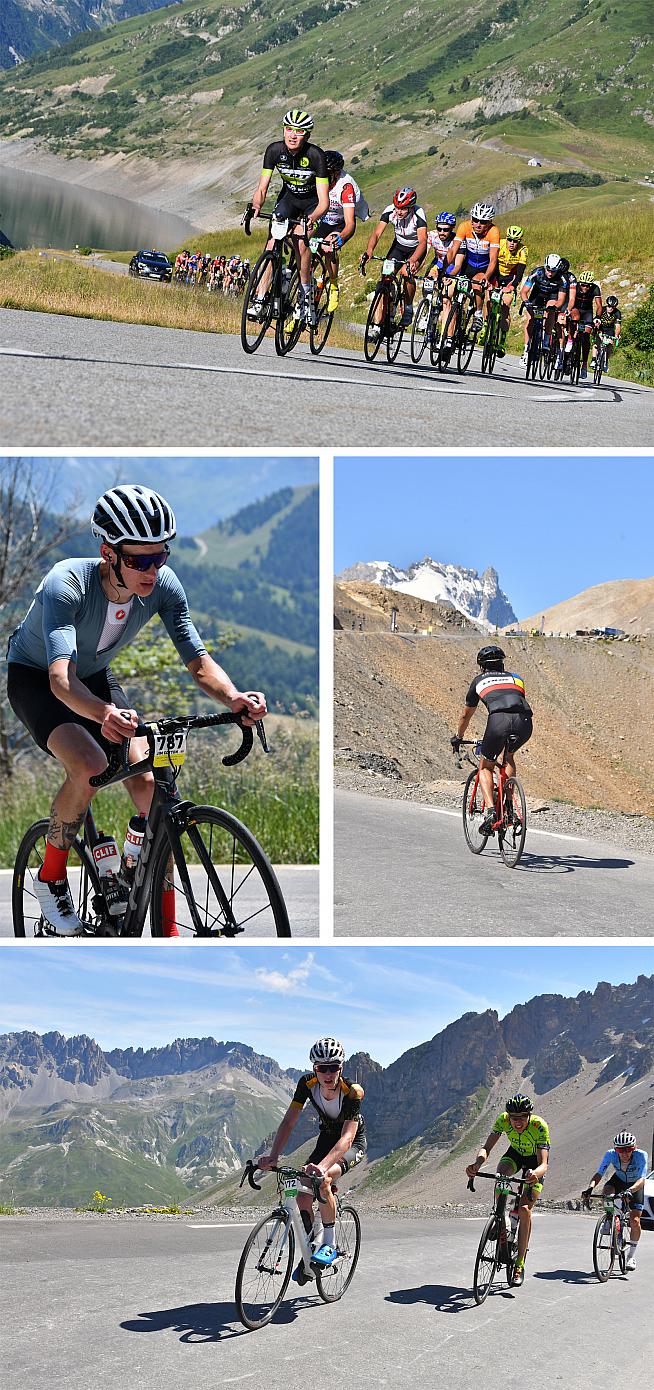
The Galibier
The first 10km seems so innocuous as you wind your way through relatively gentle slopes up an intimidatingly huge valley. Then, BOOM! You turn back on yourself at Plan Lachat and the hammer drops.
The gradient is relentless in the final 8km, and the air is thin. I started to crack in the final kilometres, a combination of poor pacing earlier in the day, dehydration, and maybe one bowl of porridge too few that morning. If you're unlucky enough to weaken at the top of the Galibier, those final kilometres will crush you. The gradient ramps to over 10%, and the road is rough. You can see the summit for at least three kilometres and it never gets closer. The tents and banners marking out the feedstation at the summit stand proudly on the horizon, taunting and teasing you, the carrot dangling before your face.
The Galibier takes no prisoners. If you've been naughty earlier in the day by mismanaging your ride, you'll only escape that cell by going to the gallows. Or at least the broom wagon.
The summit finish
Whether you get lucky or unlucky with the group you find yourself in on the Lautaret, no one can help you when Alpe d'Huez raises its head. The pinnacle, the grand finale. Just you, the mountain, and 21 switchbacks.
Alpe d'Huez picks out any weakness you may be feeling and explodes it many times over. Any element of a bonk, any muscle tightness, any flickers of doubt in the head: those iconic bends blow them from a minor niggle into a major malfunction.
Dependent on how the first 160km of your day has gone, you'll arrive in Bourg d'Oisans at anywhere between 12-4pm - just as the sun is getting its hat on and burning off the morning clouds.
Whatever the weather, you can almost guarantee it's going to be hot on the Alpe at midday. The south facing road and the rock face to one side of you reflects the sun's rays, and the high wall on the other side, that blocks off the sheer drop, amplifies it further. The road turns into something between a greenhouse and a cauldron, cooking your tyres, your legs and your mind.
This year, we started out from the valley in the scorching 35-degree heat, and even up at the 1,800m summit, it was still around 32 degrees. The water gushing through the streams that occasionally interrupt the rock wall to the side of you make you feel even drier, and the hosepipes and water handups of the passionate locals provide only a hint of solace.
And yes, the locals come out in a surprisingly large number, cheering you on, spraying you down with hoses, handing you cups of coke. It's not exactly the tunnel of crazed fans you see crowding out Froome and Co on a summit finish, but it's a nice gesture from a community that must benefit massively from the influx of 8,000 riders over that weekend.
However, just as the Alpe lays bare your every weakness, your frailties will be fully displayed to those locals if you find yourself in a state of disarray as you climb. For me, as I entered the darkest stages of a full-on implosion having mismanaged my pacing and possibly under-fuelled my ride, the cheers of encouragement felt like jeers of torment in my aching head. Just as I wanted to climb in tragic silence, the locals were able to witness my crosseyed dribble around those final few bends. A true amphitheatre, with the most tragic of heroes.
BUT: It's not all doom and gloom!
There are many ways to make you day on the Marmotte a lot less painful:
Get a helping hand out on the road
I was lucky enough to be getting support from not one but two experienced operators at the Marmotte. With accommodation and race entry provided by the ever-reliable Sportive Breaks, I also took advantage of my friends at the awesome Alpcycles crew out on the road. They were there to take my jacket and legwarmers from me after the very chilly 6am descent from Alpe d'Huez, and swap it over for the best friend of a gran fondo rider, the bin bag.
Those terrifying 30 minutes or so that I spent in the pen were passed huddling inside a bin bag with a head hole cut into it, nibbling away at a Macadamia Clif bar (the best variety), seeking solace in the warmth and carbs like a baby in a blanket with a milk bottle. To have had to carry that descending kit with me all day would have been (excuse my French - but it seems appropriate given the location of the event), a ballache.
Being one of the official tour operators, Alpcycles were able to set up one of their own feedstations at the top of the Lautaret, allowing me to dodge the riders in front of me who had pulled up in a glycogen and oxygen depleted daze to replenish themselves with sugary goods at the feed on the Galibier. Instead, I dropped straight into the Alpcycles feedstation, where I had a stash of my preferred bars, gels and drinks waiting for me, having dropped them with the guys earlier on.
To be able to roll in and out like that, leaving with pockets and bidons full of nutrition that I knew worked for me (plus a bonus present of some homemade flapjack!), and with my ears ringing with words of encouragement, certainly saved me some time and restored my mental fortitude.
Don't take it so stupidly seriously!
For the brave, foolish, and wannabe pros like me, the Marmotte is a race.
However, for at least half of the peloton, the Marmotte is an event to survive, and enjoy whilst doing so. The ride takes you through some stunning environs that you'll never forget; the ascent of the Glandon as the sun rose over the peak in front of us, bathing the whole valley in a warm green, reflecting and brightening the vivid blue of the Lac de Grand Maison, is something that will stick with me long beyond the memories of suffering.
Likewise, the awe inspiringly bleak and barren final kilometres of the Galibier; the stark contrast of the large patches of still-to-be-melted snow with the dark and foreboding rock on the jagged summit was a sight that you typically only see in filmographic feasts like Lord of the Rings.
Take the ride a little easier, compete only with the time cut, and take in the magnificence of the Haute Alpes, and the ride will be a different experience altogether.
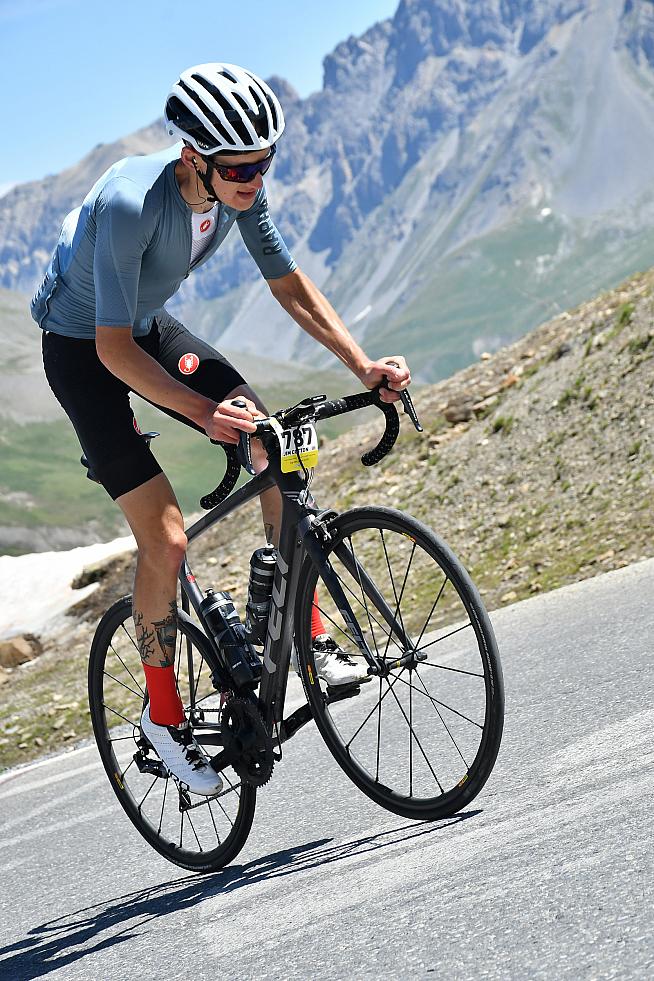
Respect the course!
As alluded to above, the parcours is nothing short of beastly. I've ridden many very hard mountainous events set over parcours with similar stats in my time, but there's something about the Marmotte that makes it intensely hard. The early softening blows of the Glandon, the lack of relief and rest on the Telegraphe-Galibier-Lautaret mid section, and the sucker punch summit finish all coalesce to make this a monster route.
However, treat it with the respect it deserves - ride a lot easier than you think necessary until at least the Telegraphe - and you'll come home strong. Finishing with gusto will make you feel like a hero, and you'll look back on the event with a twinkle in your eye.
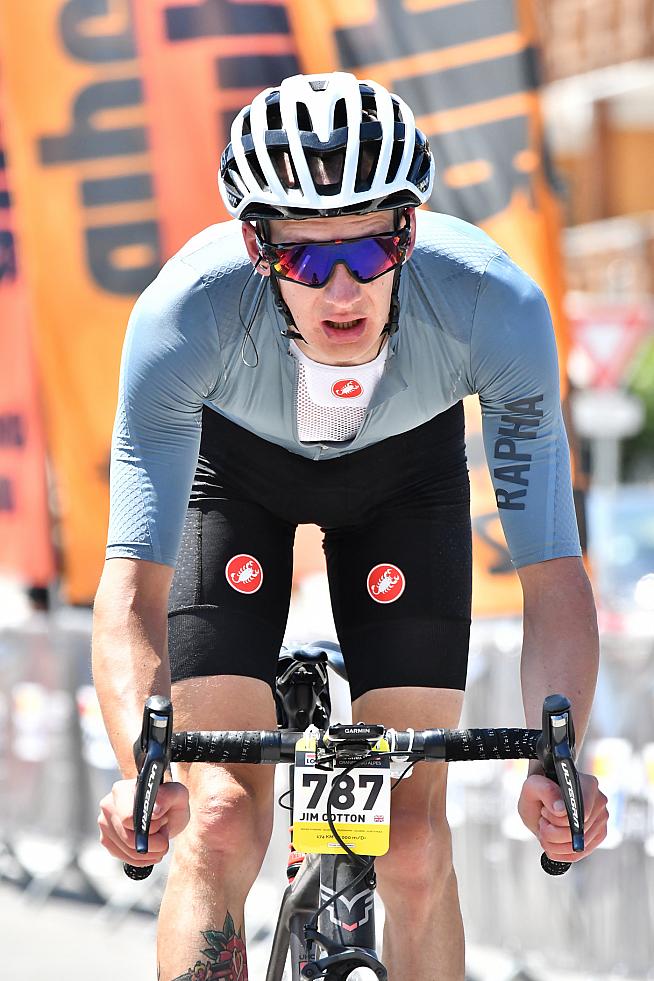
The best thing about Marmotte...
It's so hard, so wonderfully savage, you'll always want more.
I more or less blew up half way through the day, losing my grip on a top 100 placing and sliding to 123rd overall on the day. I'm desperate to go back, to repeat the suffering, but to do so in a wiser way. With a place in the very front pen in 2019 secured thanks to my placing this year, it would be foolish to waste the opportunity surely?!
I've got a score to settle with you, Marmotte. I'll see you in 2019.
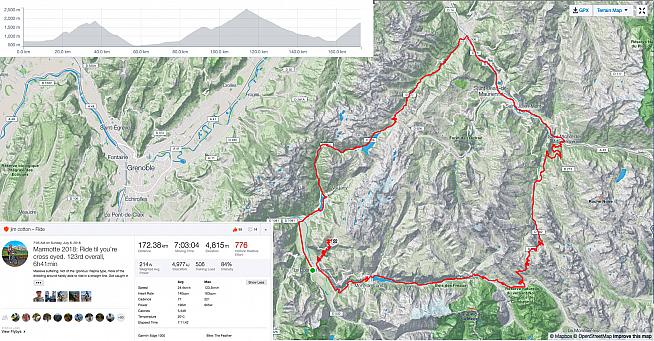
All photographs courtesy of Photo Breton, official photographer of the Marmotte Alpes - www.photobreton.com
Check out the following Marmotte related articles:
- The Marmotte route profile with detailed analysis of the 174km ride
- Joe Saumarez Smith's 2018 Marmotte ride report on how he abandoned after 100km
- Joe Saumarez Smith's 2014 Marmotte ride report in which he did actually finish
- Dan McCausland's 2014 Marmotte ride report
- Sportive.com Marmotte training and information pages
- Gold and silver times for the Marmotte
0 Comments

